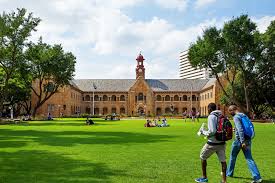University of São Paulo: New drainage techniques seek to control flooding and pollution
Brazil has the highest number of homeless and rain emergencies in five years. Professor José Rodolfo Scarati Martins, from the Department of Hydraulic and Environmental Engineering at the USP Polytechnic School (Poli), spoke to Jornal da USP in the 1st Edition about the possible and available mitigating solutions to combat floods and water pollution.
The use of drainage
“The original planet Earth had a perfect combination between the terrain, the precipitation, the vegetation cover and the size of the rivers, the natural drainage network. Urbanization has destabilized this combination”, says the professor.
From this destabilization, caused by the growth of cities, it became necessary to use artificial drainage techniques. The professor refers to three moments in the history of the application of drainage technologies.
Drainage 1.0 sought to drain rainwater quickly, mixed with sewage, and was practiced in the city of São Paulo until 1960. This method, however, harmed those who were “downstream”.
With the intensification of the conurbation, the water that one city put in the sewers transferred the problem to other cities. Then, another approach is used: instead of draining the water elsewhere, store it.
Thus, the piscinões, popular name of the detention reservoirs, appear, urban structures that “have the purpose of accumulating the flows that exceed the flow capacity of the water courses (rivers and streams)”, according to the website of the Department of Water and Electricity. This is Drain 2.0.
Drainage 3.0
Drainage 3.0, the most recent moment in the application of drainage technologies, seeks to solve the problem of water accumulation with more intelligence and planning. According to Scarati, if, in the 1990s, we were studying how ponds would avoid overloading rivers, today we seek to increase their functions.
The structures are now designed and adapted for the function of retaining diffuse pollution, the one that is “washed” from the streets by rainwater and reaches the rivers. This type of pollution is directly linked to urban infrastructure, such as sweeping, garbage collection and transport, and the presence and absence of sewers.
In addition to improving the swimming pools, new solutions were created. The use of porous asphalt, for example, makes it possible to delay the arrival of water in rivers and the purification of pollutants.
Bioretention systems, known as rain gardens, are capable of retaining the first moments of rain, preventing this lower quality water from reaching rivers.
Green roofs improve the building’s thermal conditions, make it possible to reuse rainwater and delay the flow of water into rivers.
Another possibility is the capture of rainwater for domestic use. The use of this water as drinking water is not encouraged by the difficulty of controlling the quality of this water. This feature, however, can be used for other purposes that do not require potable water, such as car washing.
The practice is still not as used in Brazil as in other countries such as Australia, says the professor. This use, however, can reduce the pressure on the production of water for consumption, preserving our producing sources. It can also bring economic benefits, since this water, of lower quality, does not demand the costs that drinking water demands.
Scarati says that rainwater harvesting requires investments to adapt buildings.

